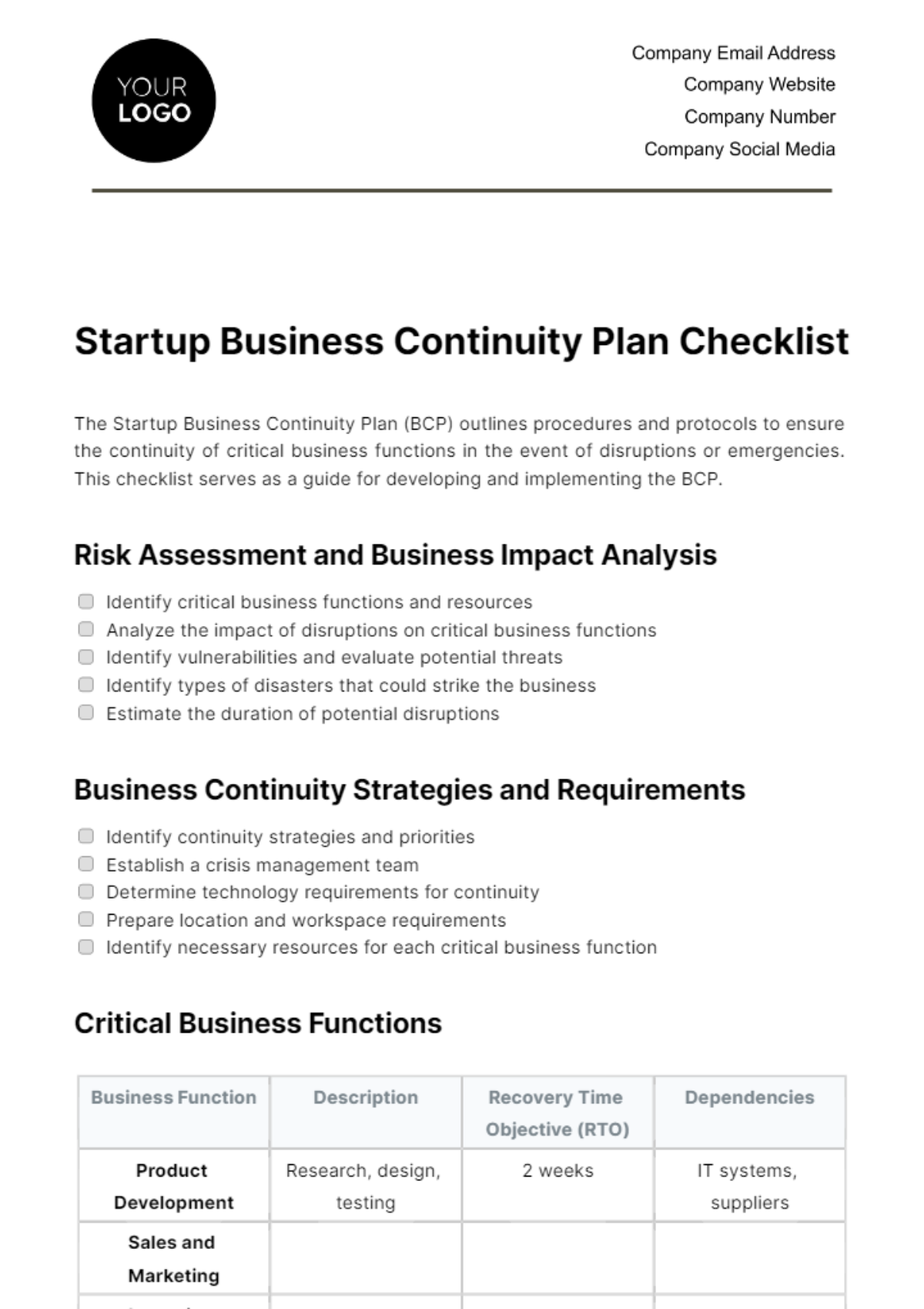Startup Business Continuity Plan Checklist
The Startup Business Continuity Plan (BCP) outlines procedures and protocols to ensure the continuity of critical business functions in the event of disruptions or emergencies. This checklist serves as a guide for developing and implementing the BCP.
Risk Assessment and Business Impact Analysis
Business Continuity Strategies and Requirements
Critical Business Functions
Business Function | Description | Recovery Time Objective (RTO) | Dependencies |
|---|
Product Development | Research, design, testing | 2 weeks | IT systems, suppliers |
Sales and Marketing | | | |
Operations | | | |
Business Continuity Plans and Procedures
Training and Awareness
Maintenance and Continuous Improvement
Recovery Strategies
Backup Systems and Data: Implement automated daily backups of critical data to offsite servers.
Alternative Work Locations: Establish remote work capabilities for employees in case of office closure.
Supplier and Vendor Relationships: Maintain relationships with multiple suppliers and vendors to mitigate supply chain disruptions.
Cybersecurity Measures: Install firewalls, antivirus software, and conduct regular security audits.
Prepared By: [YOUR NAME]
Startup Templates @ Template.net






























